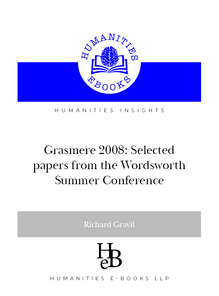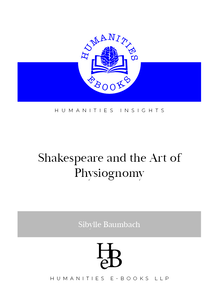-
 Univers
Univers
-
 Ebooks
Ebooks
-
 Livres audio
Livres audio
-
 Presse
Presse
-
 Podcasts
Podcasts
-
 BD
BD
-
 Documents
Documents
-
- Cours
- Révisions
- Ressources pédagogiques
- Sciences de l’éducation
- Manuels scolaires
- Langues
- Travaux de classe
- Annales de BEP
- Etudes supérieures
- Maternelle et primaire
- Fiches de lecture
- Orientation scolaire
- Méthodologie
- Corrigés de devoir
- Annales d’examens et concours
- Annales du bac
- Annales du brevet
- Rapports de stage
La lecture à portée de main
202 pages
English
Découvre YouScribe en t'inscrivant gratuitement
Je m'inscrisDécouvre YouScribe en t'inscrivant gratuitement
Je m'inscris
Obtenez un accès à la bibliothèque pour le consulter en ligne
En savoir plus
En savoir plus
202 pages
English
Obtenez un accès à la bibliothèque pour le consulter en ligne
En savoir plus
En savoir plus

Description
This book (also available in paperback from Troubador) deals with the poetics of the human face, the art of physiognomy, and strategies of nonverbal communication in Shakespeare's plays.
Sujets
Informations
| Publié par | Humanities eBooks |
| Date de parution | 11 janvier 2021 |
| Nombre de lectures | 0 |
| EAN13 | 9781847600783 |
| Langue | English |
| Poids de l'ouvrage | 1 Mo |
Informations légales : prix de location à la page 0,0472€. Cette information est donnée uniquement à titre indicatif conformément à la législation en vigueur.
Extrait
Shakespeare and the Art of Physiognomy
Sibylle Baumbach
“…PHYSIOGNOMY, n. The art of determining the character of another by the resemblances and differences between his face and our own, which is the standard of excellence”
HEB☼FOR ADVICE ON THE USE OF THIS EBOOK PLEASE SCROLL TO PAGE 2
Using this Ebookt
*This book is designed to be read in single page view, using the ‘ît page’ command. *To navigate through the contents use the hyperlinked ‘Bookmarks’ at the left of the screen. *To search, click the search symbol. *For ease of reading, use <CTRL+L> to enlarge the page to full screen, and return to normal view using < Esc >. *Hyperlinks (if any) appear in Blue Underlined Text.
Permissions
Your purchase of this ebook licenses you to read this work on-screen.
You may print a copy of the book for your own use but copy and paste functions are disabled.
No part of this publication may be otherwise reproduced or transmitted or distributed without the prior written permission of both the copyright owner and the publisher.
This work is copyright. Making or distributing copies of this book would constitute copyright infringement and would be liable to prosecution. Thank you for respecting the rights of the author.
Shakespeare and the Art of Physiognomy
Sibylle Baumbach
HEB☼Humanities-Ebooks, LLP
© Sibylle Baumbac, 2008
he Autor as asserted er rigt to be identified as te autor of tis Work in accordance wit te Copyrigt, Designs and Patents Act 1988.
First publised byHumanitiesEbooks, LLP, Tirril Hall, Tirril, Penrit CA10 2JE
he Ebook (wit te facility of word and prase searc) is available exclusively from ttp://www.umanities-ebooks.co.uk
he paperback is available exclusively from ttp://www.troubador.co.uk
ISBN 978-1-84760-078-3 Ebook ISBN 978-1-84760-079-0 Paperback
Contents
1 Looking for Shakespeare’s Face(s) 2 A Brief Overview of Physiognomic Thought and Theory 3 Shakespeare’s Physiognomic Characters 3.1 Physiognomic Types and Character-(Re)Writings 3.2 Outperforming Performance 3.3 Physiognomic ReLections4 A Physiognomic Inventory 4.1 A Title-leaf to the Face 4.2 Windows to the Soul 4.3 ‘Let him not leave out the colour of her hair’ 4.4 ‘Where is thy blush?’ 4.5 ‘God hath given you one face, and you make yourselves another’ 4.6 ‘Soft, gentle, and low, an excellent thing in woman’ 5 ‘Let me behold thy face’—Physiognomic Readings 6 The Physiognomist in Shakespeare’s Plays 6.1 Facing the Macbeths 6.2 Cleopatra, a New Gorgon 6.3Othelloand the Physiognomy of the Mind 6.4 Much Ado about Masking
7 Conclusion 8 Selected Bibliography
PHYSIOGNOMY, n. The art of determining the character of another by the resemblances and differences between his face and our own, which is the standard of excellence.
‘There is no art,’ says Shakespeare, foolish man, ‘To read the mind’s construction in the face.’ The physiognomists his portrait scan, And say: ‘How little wisdom here we trace! He knew his face disclosed his mind and heart, So, in his own defence, denied our art.’
Lavatar Shunk (Ambrose Bierce,The Devil’s Dictionary, 1911)
1 Looking for Shakespeare’s Face(s)
1 ‘Searching for Shakespeare’ has become a popular discipline as numerous recent publications on the life of the poet and dramatist conîrm. Thereby it is especially the mystery of ‘Shakespeare’s face’ which takes centre stage. The particular fascination elicited by Shakespeare’s countenance is based on a strong belief in phy-siognomy, by which it is understood that the human face indicates a person’s character as well as traces of the passions of the mind. Physiognomy, which reaches back into antiquity, was revived towards th the end of the 16 century when numerous physiognomic manuals were published and the art of face-reading became popular again both as a tool for deciphering fellow-beings and as a device for self-fashioning. Taking into consideration the renaissance of physiogno-th th mic thought and theory in the late 16 and early 17 century, the fol-lowing study will examine physiognomic readings in Shakespeare’s oeuvre. Based on the physiognomic discourse of his time, a physi-ognomic inventory of his plays will be established before embarking on a close analysis of the ‘art of physiognomy’ (The Rape of Lucrece 1394f.) as it is performed in his plays. Thereby, the focus will be set on the construction, translation, and reception of ‘characters’, that is on the production of physiognomic data, its verbalisation or, respec-tively, visualisation onstage, as well as its reception by physiogno-
Searching for Shakespeare was the title of an exhibition showing Shakespeare’s portraits in the National Portrait Gallery in 2006. 2 See, for instance, A. D. Nuttall,Shakespeare: The Thinker(New Haven et al.: Yale University Press, 2007);Bill Bryson,Shakespeare: The World as Stage(New York: Atlas Books / Harper Collins, 2007);Mark Anderson,Shakespeareby Another Name(New York: Gotham Books et al., 2005), Peter Ackroyd, Shakespeare: The BiographyChatto and Windus, 2005); Stephen (London: Greenblatt,Will in the World: How Shakespeare became Shakespeare(London: Jonathan Cape, 2004); Michael Wood,In Search of Shakespeare (London: BBC, 2003). 3 Stephanie Nolen,Shakespeare’s Face(London et al.: Piatkus, 2003).
8
Shakespeare and the Art of Physiognomy
mic readers. The latter use their physiognomic competence not only to decipher their fellowmen but also to fashion their own faces and bodies, to frame their faces to all occasions, and to hide their emo-tions and passions behind a seemingly natural mask, which is their own face. Thus, in Shakespeare’s work, faces are perceived as open books and cryptic documents, they are read, re-read, and misread and subject to manipulative forces. At the same time, the face remains the key medium for communication in Shakespeare’s plays: it speaks even when words fail and precedes verbal utterances by its silent but very telling expression. The present study investigates Shakespeare’s poetics of the face and his physiognomic scheme. This includes the analysis of the construction and reception of ‘characters’ both in the literal and metaphorical meaning of the term, as well as the tracing of the progression from characters on the page to characters on the face, which is a frequent topos in Shakespeare’s plays. Given that the limits and the potential of physiognomy are key motifs in his writings, it is almost ironic that Shakespeare’s face should have become an object for abundant physiognomic (mis-) 1 readings. His plays and poems constantly tackle the question of the interrelation between seeming and being, between outer and inner man, or, more speciîcally, between man’s physiognomy and his char-acter from numerous different perspectives. Even though it is often suggested that ‘there’s no art / To înd the mind’s construction in the face’, to quote Duncan inMacbethface eventually(1.4.11f.), the reveals itself as an eloquent and most telling medium for characteri-sation. Thereby anti-physiognomic axioms such as Duncan’s emerge as instances of subversive afîrmation as well as a dramatic strategy to sensitise readers and audiences to both the potentialities and the ambivalence of facial rhetoric. Quite frequently in Shakespeare, the art of face-reading is disputed only to be re-established.Macbethis a case in point in that Duncan’s remark sets the audience on the wrong track, belying facial eloquence, which especially in this play provides the key to the characters onstage (see Chapter 6.1).
Compare Hildegard Hammerschmidt-Hummel,The True Face of Shakespeare(London: Chaucer Press, 2006). 2 Unless indicated otherwise, quotations followThe Norton Shakespeare, ed. by Stephen Greenblatt et al. (New York/London: Norton, 997).
Shakespeare and the Art of Physiognomy
9
Before starting our investigation of Shakespeare’s physiognomic scheme, however, let us îrst reconsider the portrayals and readings of Shakespeare’s manifold physiognomies, especially as some of these (îrst and foremost the Droeshout engraving) might hold the key to the way his plays should be read. Facing Shakespeare’s monument in the Holy Trinity Church at Stratford-upon-Avon, the American writer Nathaniel Hawthorne, for instance, almost immediately embarks on a 1 physiognomic-phrenologic reading:
I know not what the phrenologists say to the bust. The forehead is but moderately developed, and retreats somewhat, the upper part of the skull rising pyramidally; the eyes are prominent almost beyond the penthouse of the brow; the upper lip is so long that it must have been almost a deformity, unless the sculptor artisti-cally exaggerated its length, in consideration, that, on the pedes-tal, it must be foreshortened by being looked at from below. On the whole, Shakespeare must have had a singular rather than a prepossessing face; and it is wonderful how, with this bust before its eyes, the world has persisted in maintaining an erroneous notion of his appearance, allowing painters and sculptors to foist their idealized nonsense on its all, instead of the genuine man. For my part, the Shakespeare of my mind’s eye is henceforth to be a personage of a ruddy English complexion, with a reasonably capacious brow, intelligent and quickly observant eyes, a nose curved slightly outward, a long, queer upper lip, with the mouth a little unclosed beneath it, and cheeks considerably developed in the lower part and beneath the chin. But when Shakespeare was himself (for nine tenths of the time, according to all appearances, he was but the burgher of Stratford), he doubtless shone through this dull mask and transîgured it into the face of an angel.
Phrenology is based on the belief that the form of the cranial bone reects a person s character and that the development of certain areas of the brain can be felt in bumps and îssures of the skull. The termphrenology, however, was not coined until around 800 when the German neuroanatomist Franz Joseph Gall introduced the study of the localisation of mental development in the form of the cranium. Thereforephrenology, in this study, will be categorised as being part ofphysiognomy. 2 Nathaniel Hawthorne, ‘Recollection of a Gifted Woman’, in George P. Lathrop ed.,The Complete Works of Nathaniel Hawthorne (Boston et al.: Houghton, Mifin, 887) Vol. 7,3–47.
10
Shakespeare and the Art of Physiognomy
Deeply impressed by Shakespeare’s portrait, Hawthorne chose to clear his mental gallery of all those attering pictures and por-traits, which dominated his image of the dramatist up to that time. The îrst to go might have been the Chandos portrait, ‘the favour-1 ite likeness of Shakespeare’, which shows a Mediterranean, or, as J. Hain Friswell claimed, ‘a decidedly Jewish physiognomy’ —a swarthy full-bearded man with curly hair and a golden earring. The Flower and the Droeshout portraits would have been the next to be dismissed. Both of these portraits had a great impact on the ways in which Shakespeare was perceived over the centuries even though the Flower portrait turned out to be a complete fake, or more precisely, a coloured copy of the Droeshout engraving. The most prominent feature in all of these images of Shakespeare is his broad, lofty fore-head that was to become one of his main characteristics. Not only does it indicate greatness of mind but it also strengthens a possible connection to the ‘genio Socratem’ , which is implied in the epitaph engraved below the bust in the Holy Trinity Church. There are no records indicating how phrenologists or physiognomists would have judged Shakespeare’s face. However, it does not seem unlikely that the bard would have met a similar fate as Socrates when it came to physiognomic readings. It is told that Zopyros, for instance, a renowned physiognomist of the time, classiîed the sophist asstu-pidum et bardum, as dull and imbecile by the mere look at Socrates’ face, being unaware of his identity.
Samuel Schoenbaum,Shakespeare’s LivesClarendon Press, 99) (Oxford: 203. 2 Ibidem,William Shakespeare: Records and Images (London: Scolar Press, 98) 75. 3 The Greek philosopher is also said to have had an exceptionally roomy fore-head, which the physiognomist Johann Caspar Lavater regards as a key indica-tor of an intelligent, strong-minded person. Referring to Socrates, Lavater writes,‘[i]n these high and roomy arches, undoubtedly, the spirit dwells which will pen-etrate clouds of difîculties, and vanquish hosts of impediments.’ (Cf. Johann C. Lavater,Essays on Physiognomy, trans. by Thomas Holcroft [London: J. Robinson, 844] 4th ed., 77f.) 4 Compare Cicero,De Fato0. The Zopyros episode is frequently referred to in Early Modern physiognomic treatises. See also Thomas Hill,The Contemplation of Mankinde(London: Seres, 57) fol. x–xi, and Richard Saunders,Physiognomie and Chiromancie, Metoposcopie(London: Brooke, 653) 44.
-
 Univers
Univers
-
 Ebooks
Ebooks
-
 Livres audio
Livres audio
-
 Presse
Presse
-
 Podcasts
Podcasts
-
 BD
BD
-
 Documents
Documents
-
Jeunesse
-
Littérature
-
Ressources professionnelles
-
Santé et bien-être
-
Savoirs
-
Education
-
Loisirs et hobbies
-
Art, musique et cinéma
-
Actualité et débat de société
-
Jeunesse
-
Littérature
-
Ressources professionnelles
-
Santé et bien-être
-
Savoirs
-
Education
-
Loisirs et hobbies
-
Art, musique et cinéma
-
Actualité et débat de société
-
Actualités
-
Lifestyle
-
Presse jeunesse
-
Presse professionnelle
-
Pratique
-
Presse sportive
-
Presse internationale
-
Culture & Médias
-
Action et Aventures
-
Science-fiction et Fantasy
-
Société
-
Jeunesse
-
Littérature
-
Ressources professionnelles
-
Santé et bien-être
-
Savoirs
-
Education
-
Loisirs et hobbies
-
Art, musique et cinéma
-
Actualité et débat de société
- Cours
- Révisions
- Ressources pédagogiques
- Sciences de l’éducation
- Manuels scolaires
- Langues
- Travaux de classe
- Annales de BEP
- Etudes supérieures
- Maternelle et primaire
- Fiches de lecture
- Orientation scolaire
- Méthodologie
- Corrigés de devoir
- Annales d’examens et concours
- Annales du bac
- Annales du brevet
- Rapports de stage
Signaler un problème
YouScribe
Le catalogue
Le service
© 2010-2024 YouScribe




















